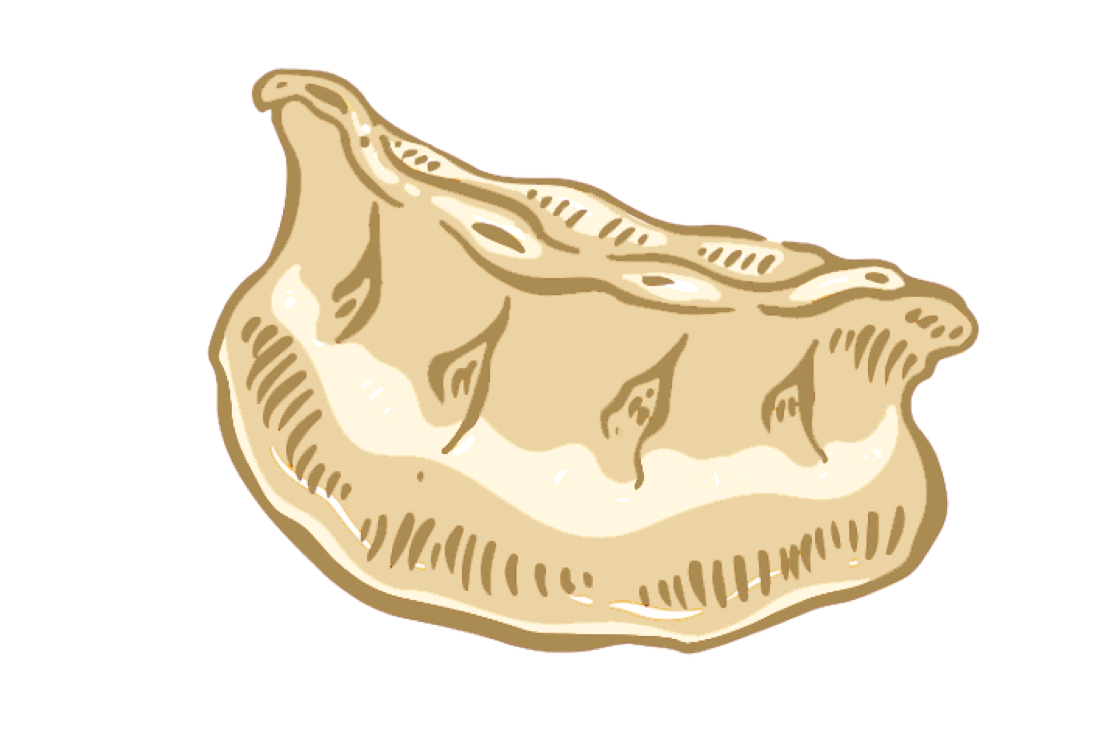But the family tree of dumpling spreads far and wide. Legend has it that dumpling was imported to Europe from Asia by Marco Polo or the Mongol Empire. Whether it’s true or not, each kind of dumpling is a unique delicacy, bearing the mark of the local culinary culture. The combination of wrapping skin and filling provides a simple solution to fill the belly and impress the taste buds to many countries around the world.

Japanese gyoza is a close relative to Chinese dumplings, with a smaller size and more elongated shape. A more apparent difference between the two varieties is the position they occupy in their respective societies. While Japanese treat gyoza as a side dish, the richly-filled Chinese dumplings paired with soup could well be a full-fledged meal to Northern Chinese.

Mandu is a transliteration to Chinese steamed bun mantou, but it’s actually more similar to dumpling in China. Expect familiar Korean ingredients such as tofu, bean sprout and kimchi in the shell, with the addition of beef in more expensive alternatives. Korean dumplings sometimes come in a cylinder shape as the two corners are folded together. They could be either steamed or boiled in broth.

This Himalayan favourite is likely to be introduced to Nepal from Tibet. Typical fillings include vegetables and beef. Some varieties use cheese, potato or other local ingredients, while others boast an intricately folded skin. Momo is special for the dipping sauce it’s served with. Sauces made with curry and chilli show influences from South Asia and Tibet.

From ravioli, tortellini to under-the-radar agnolotti, Italian filled pasta comes in all shapes and forms. The more popular types of ravioli and tortellini feature a mixed filling of ground meat and cheese. These dishes are also where many chefs exercise their creativity in presentation. The former is often shaped like mini square or circular cushions, while you’ll find the bite-sized tortellini “Walking into Broth” in three Michelin-starred restaurant Osteria Francescana headed by Massio Bottura.

Pelmeni is an undoubtedly a meat lover’s delight, employing beef, lamb, pork, venison, sometimes a mix of everything. The round, shell-shaped appearance reflects the rustic character of the boiled dumpling. It’s the kind of comfort food that takes Russians through the long, frigid winter.

This cousin of pelmeni is widely celebrated in Poland. Every August, Krakow lights up as the pierogi festival turns the city into a wild carnival. Versatility has much to do with its omnipresence. It can be fried or boiled, stuffed with meat, potato, sauerkraut and other savoury and sweet ingredients, though sour cream is rarely missed as a condiment.

Served in Uzbekistan on Lagan plates with elaborate patterns, manti is a more substantial fare in the dumpling family, usually eaten held in hands. Typical fillings include dumba (local fat-tailed sheep), onion, potato and other vegetables but could change according to season.

Kreplach is a Jewish festive speciality, served on special days like Rosh Hashanah, the eve of Yom Kippur and Simchat Torah. The dumpling is boiled then served in chicken broth. Its triangular look stands out from most dumplings across the globe.
















